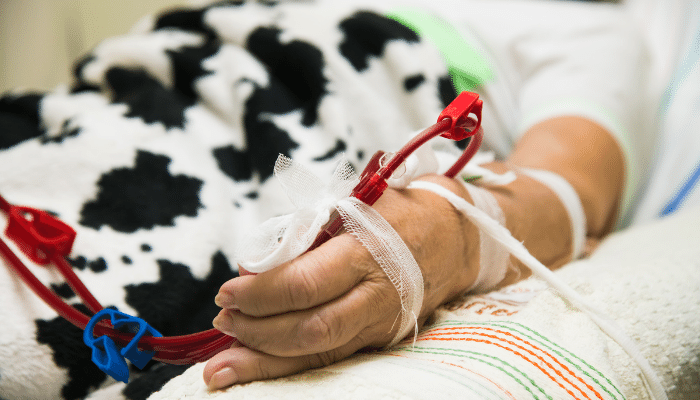Every week, approximately two million people across the globe sit for hours, fastened to a blinking, whirring, blood-sterilizing dialysis machine. The Centers for Disease Control and Prevention (CDC) conducted a study in 2017. According to it, around 30 million people were suffering from chronic kidney diseases in the U.S. Also, high blood pressure and diabetes are two of the major risk factors that lead to kidney failures. As per Fortune Business Insights, the dialysis equipment market is estimated to reach USD 22.41 Billion by 2025.
The discovery of medical devices, diagnostics, and drugs is often viewed as innovations in the field of healthcare. Dialysis has also improved rapidly since the past few decades due to the implementation of recent advancements in science and technology. these developments have aided the dialysis patients in providing improved results, access to efficient care, and a better experience.
Modern dialysis traces its origin back to the times of World War II. That was the very first time when Willem J. Kolff, MD, developed an artificial kidney to drain out the extra waste and fluid that accumulated in a patient’s blood post kidney failure. Dialysis then was considered to be a luxury due to its scarcity. It was only offered in a few selected hospitals. Life-and-death committees were responsible for deciding who would receive the life-saving procedure and who wouldn’t. However, in 1973, the Medicare End-Stage Renal Disease (ESRD) program was launched. It started applying research findings and evidence-based studies to enhance dialysis. In today’s world, dialysis is a widely available procedure that has and is currently going through numerous innovations. This article provides insights into a few of the latest developments that have occurred in the field of dialysis equipment.
RGGGH Provides Dialysis Service to COVID-19 Patients
In June 2020, the Rajiv Gandhi Government General Hospital (RGGGH) located in Chennai declared that around 166 end stage renal disease patients underwent dialysis since March-end in the hospital. All of them were COVID-19 positives. RGGGH has set up a COVID-19 dialysis unit consisting of 10 stations. The patients were discharged immediately after recovery. COVID-19 affects kidneys and it can lead to renal dysfunction in a small set of persons living with normal renal function. Many of the patients had comorbidities, namely, cardiac ailments, high blood pressure, and diabetes.
Baxter Begins Clinical Trial for On-demand Peritoneal Dialysis Solution System
Nowadays, patients receive up to 40 boxes of dialysis solution that are pre-made, every four weeks. They weigh more than 900 pounds in an average. These boxes are heavy and they usually take up a lot of space in the patient’s house. Baxter International Inc., a healthcare company, based in the U.S. has come to the rescue by improving PD solutions, which, in turn, has led to the elimination of heavy bags that the patients had to previously carry around their houses during the therapy sessions. The company announced in January 2019 that it enrolled its first pool of patients in the U.S. clinical trial for the company’s peritoneal dialysis (PD) solution generation system.
The system is specially designed to enhance a patient’s overall experience by developing a PD solution in small batches in the patient’s residence. FDA has also instructed the company to process with the multi-center, prospective clinical trial. The system further brings together Baxter’s expertise in water filtration systems, industry-leading drug delivery technology, and innovations in home dialysis. The technology is on-demand and it uses a small water filtration device and Amia automated peritoneal dialysis system that aid in turning the patient’s tap water into dialysis solution for finishing their therapy sessions.
Fresenius’s New Manufacturing Facility to Provide Dialysis Equipment in Southeast Asia
In September 2017, Fresenius Medical Care, a provider of kidney dialysis services, headquartered in Germany, declared that it has started a new manufacturing facility in Bandar Enstek, Malaysia. It is a state-of-the-art facility that would manufacture high-quality hemodialysis disinfectants and concentrates for Southeast Asia. The plant would also produce PD products for the treatment of CAPD. The company chose Malaysia to be the regional manufacturing hub due to the country’s strategic geographic location, availability of highly skilled workforce, and positive business environment. It would strengthen the company’s commitment to dialysis patients and would also improve local healthcare capabilities.
Loke Khing Hong Set to Revolutionize Dialysis Process by Inventing an Advanced Machine
In August 2018, Loke Khing Hong, director of Medical Devices Corporation Sdn Bhd, invented a portable dialysis machine that aids patients suffering from peritoneal dialysis. He states that his device is set to revolutionize the dialysis process. He came across the world of dialysis equipment while he was busy manufacturing flexible bags for the healthcare industry. Loke has begun to look for an investor so that he would be able to manufacture the machines and at the same time, produce medical solutions. According to Loke, he was surprised to see the extremely bulky dialysis machines that are generally available in the market. He instantly decided to develop a patient-friendly machine. His machine weighs less than 4 kilograms. A very useful feature of his machine is that it would allow the doctor to monitor the patient’s health through a mobile application.
Conclusion
Due to the persistent efforts of the kidney community, the field of dialysis has certainly evolved from a scarcely available process to a common resource. However, much more can surely be done to create new devices and drugs to improve the lives of patients suffering from acute kidney failure. Developments, namely, a better quality of life, morbidity, and mortality have enhanced over time with the implementation of science and modern technologies in the healthcare sector. As long as the kidney community exists, improvements in dialysis equipment will go on and several efforts will be made by their persistent dedication to prioritizing individual needs, efficacy, and safety of every patient out there.







